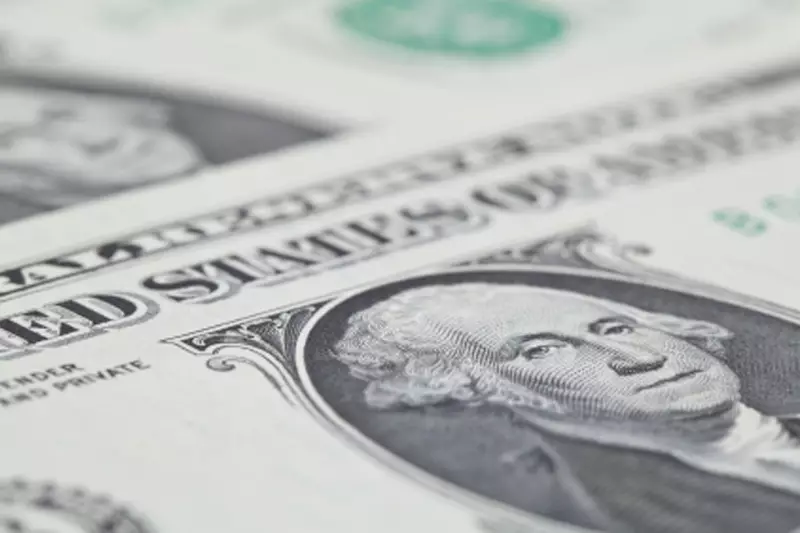The U.S. Dollar’s Resilience Amid Political Shifts and Economic Responses

The U.S. dollar has exhibited a steadying trend as it approaches the end of a week rife with volatility. Key events, particularly the electoral victory of former President Donald Trump, have substantially influenced market behavior, prompting traders to reassess their positions in response to various economic indicators and shifting policies. The Dollar Index, which serves as a benchmark for the dollar against other major currencies, has shown modest increases, suggesting that traders are carefully navigating the waters of a new political landscape and its economic implications.
As of early Friday, the Dollar Index held steady at around 104.372, reflecting a mere 0.2% gain for the week. A significant spike occurred on Wednesday, following Trump’s electoral win, when the dollar surged by 1.5%, marking its most substantial single-day rise since September 2022. This uptrend was largely fueled by expectations surrounding a new Trump administration, which many anticipated would adopt tariff strategies and conservative immigration policies that could alter Federal Reserve actions on interest rates. However, the subsequent response from the Federal Reserve, which cut interest rates by 25 basis points, quelled some of the initial enthusiasm. The central bank has indicated a likelihood of further cuts if inflation trends align with its target.
In this context, analysts at ING pointed out that much of the dollar’s updraft following the election has been reversed. They emphasize that traders are recalibrating their positions rather than fundamentally reassessing the impact a Trump presidency might have on global markets. The anticipation around upcoming economic reports, such as the consumer price index, will likely play a pivotal role in shaping market sentiment as the year concludes.
Meanwhile, the euro has faced downward pressure, with the EUR/USD pair dipping by 0.2% to 1.0785. This decline signals a potentially challenging week for the eurozone, particularly against the backdrop of political instability in Germany. Following the dismissal of Finance Minister Olaf Scholz, markets are anxious about potential snap elections and how this turbulence could reverberate throughout the eurozone.
Analysts also highlight that the election results in the United States might trigger tensions between Trump’s administration and the European Union, especially in trade negotiations. The euro’s brief rally above 1.080, attributed to the unwinding of dollar long positions, reveals that traders are still cautious about the adverse implications stemming from Trump’s policies.
In the UK, the British pound has seen a slight decline against the dollar, hovering around 1.2961, as the Bank of England’s recent rate cut continues to influence perceptions of price stability. This marks the second rate cut since the pandemic began, reducing the base rate to 4.75% and raising concerns around inflation projections. There is skepticism over further cuts in December, with market expectations dwindling as the government’s budget raises flags about inflation returning to target levels.
Despite the immediate effects of these policy changes, analysts express that the broader path for the Bank of England’s monetary policy may still include aggressive cuts in early 2024, reflecting a divergent approach compared to market anticipations. Continued monitoring of economic indicators will be crucial for navigating the future landscape of the pound.
Turning to Asia, the USD/CNY pair saw a minor increase of 0.2%, reflecting a modest weakening of the yuan as speculation builds surrounding the National People’s Congress (NPC) session. The NPC is expected to detail new fiscal stimulus measures, with projections suggesting at least 10 trillion yuan in new government spending. Market participants are eager to ascertain the specifics of these proposed measures and their potential impact on the Chinese economy.
Additionally, with the Japanese yen experiencing a shift, falling 0.4% to 152.39 against the dollar, Japanese officials have issued verbal warnings regarding potential intervention in currency markets, flagging an alert to possible drastic measures to stabilize their financial environment.
As the dollar stabilizes amid the geopolitical and economic upheavals brought on by leadership changes in both the U.S. and Europe, traders remain wary. The delicate balance between monetary policy, inflation targets, and political discourse will significantly dictate the dollar’s trajectory in the coming weeks. With critical economic data on the horizon, the market participants’ reaction to these factors will be decisive in shaping the dollar’s standing in the global economy as 2023 draws to a close.





